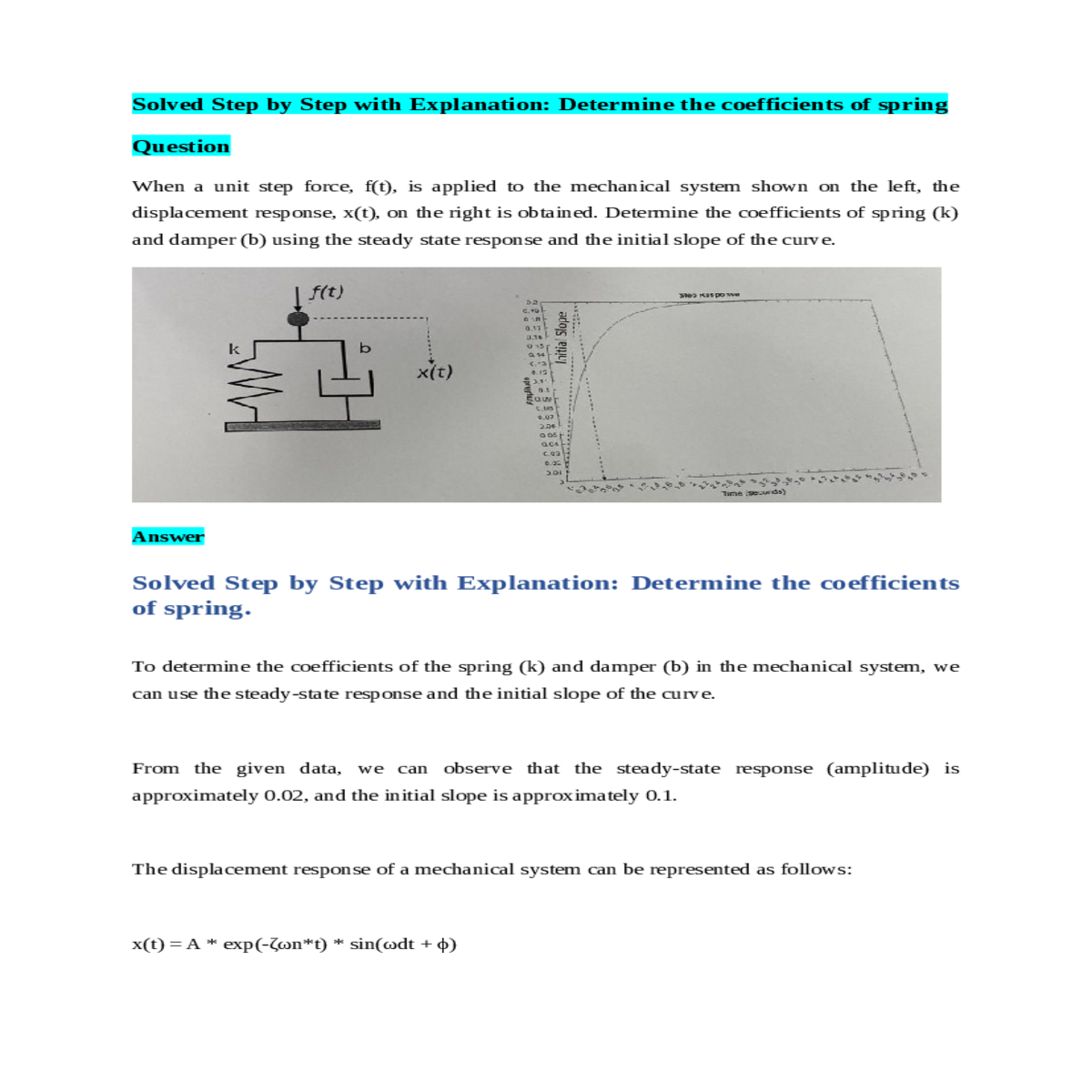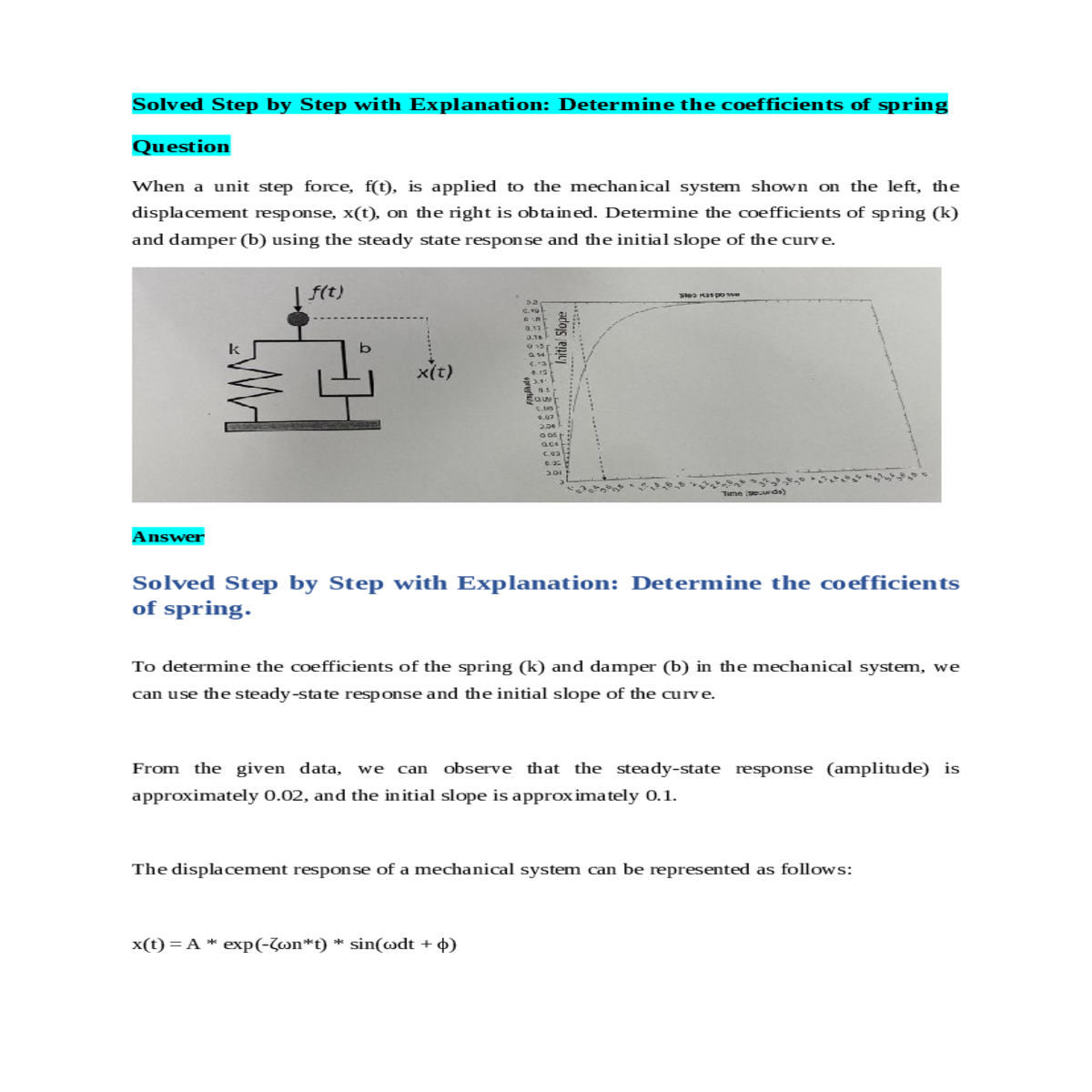Need determine the natural frequency and the damped frequency
Answer
Solved Step by Step with Explanation: Determine the coefficients of spring.
To determine the coefficients of the spring (k) and damper (b) in the mechanical system, we can use the steady-state response and the initial slope of the curve.
A is the amplitude of the steady state response
ζ is the damping ratio
ζ = (1 / (2 * sqrt(k * m))) * slope
where m is the mass of the system, and in this case, we assume it to be 1 (arbitrary units).
T = 1 / ωd
From the given data, we can observe that the time period (T) is approximately 2020 seconds. Thus:
Substituting the values we have:
ωn = (1 / 2020) * sqrt(1 - ζ^2)
k = [(1 / 2020) * sqrt(1 - ζ^2)]^2
b = 2 * ζ * [(1 / 2020) * sqrt(1 - ζ^2)]
Using the initial slope of 0.1, we have:
0.1 = (1 / (2 * sqrt(k)))
k = 25
Next, let's calculate the damped frequency ωd:
ωn = ωd * sqrt (1 - ζ^2)
ωn = (1 / 2020) * sqrt (1 - (1 / (2 * sqrt(k)))^2)
ωn = (1 / 2020) * sqrt (99/100)
ωn = (1 / 2020) * (sqrt (99) / sqrt (100))
b = 2 * ζ * ωn
b = 2 * (1 / (2 * sqrt(k))) * [(1 / 2020) * (sqrt(99) / 10)]
Next, we calculate b:
b = 2 * (1 / (2 * sqrt(k))) * [(1 / 2020) * (sqrt(99) / 10)]
b = 1 / 10
Therefore, the coefficients of the spring and damper are:





